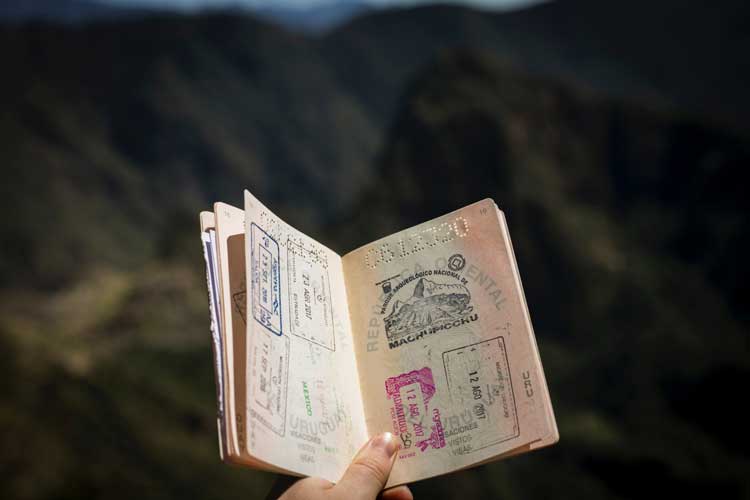
If you’re anything like us, you’re eagerly dreaming of your next foreign trip, whether that’s drooling over pictures of your bucket-list destination or checking for flights on the price comparison sites.
Perhaps you’ve got in mind a Baltic cruise from Stockholm to Copenhagen, via gems like Estonia’s medieval capital Tallinn. Or, maybe you can’t wait to enjoy some Californian sun and surf.
Wherever you plan to travel in the wide world, depending on your destination you may need to obtain a visa. This permits your entry to the country on arrival and also determines how long you’re allowed to stay and according to which conditions (for example, you may need to provide proof that you can financially support yourself during your trip).
With this in mind, here are five tips to obtain your travel visa for when you next jet off.

See If You’re Eligible for an E-Visa (Electronic Visa) With an Online Service.
In recent years, a growing number of countries have begun to offer what are called e-Visas. These systems allow you to apply for and obtain your travel pass online before your trip, then either print it out or even show on your mobile phone when you arrive.
The advantages of e-Visas over traditional visas include that you don’t have to visit the embassy, you save yourself filling in long forms by hand, and countries cut down on bureaucracy.
A wide range of countries now offer online eVisa systems, from Canada to Turkey to Vietnam. You can apply with a service like Byevisa. An eVisa saves you time and stress ahead of your trip, so you can focus on the fun!
If the Country Offers Multiple Visas, Decide Which One You Need.
Some countries such as India offer multiple visas to suit a variety of travel plans.
For example, you can apply or the 30-day Double Entry visa, which allows you to stay for a month and enter and exit the country twice. Alternatively, if you’re planning a full trip of the sub-continent, there’s a 1-year Multiple Entry visa during which time you can come and go as you please!
With this in mind, be sure to check which visas each country offers and select the one that best suits your trip. This will help get your journey off to a fab start.
 See How Long the Visa’s Valid for and How Long It Allows You to Stay.
See How Long the Visa’s Valid for and How Long It Allows You to Stay.
Each country has its own rules regarding how long its visas are valid for and you long you’re permitted to remain once you cross the border. This also depends on your nationality.
For example, most nationalities who obtain New Zealand’s ETA (Electronic Travel Authorisation) can stay for 3 months, yet Britons are eligible to remain for 6 months.
Meanwhile, Americans can currently visit Europe’s Schengen Area without a visa (although this will change with the introduction of the ETIAS in late 2022) yet Indians, Russians and Chinese need a Schengen Visa.
So be sure to check what visa you’re eligible for! Importantly, take care to distinguish the validity period from the period you’re allowed to stay for, as these frequently differ. For instance, a visa may be valid for 90 days from its issue date, while you can stay for 30 days.
Check the Conditions You Need to Qualify for the Visa.
Countries usually require you to meet certain conditions to be eligible for the visa. Oftentimes these are straightforward, such as having a passport that’s valid for a minimum of 6 months from your planned entry date.
For some countries though, you may need to provide proof that you’ve got enough money to support yourself on your trip, or show evidence of your hotel bookings and other tickets. In addition, you might need to provide a digital scan of your passport and a recent photo.
Given this, be sure to check what supporting documentation you need as part of your application. Get it all together before you start to apply to ensure you receive your visa in good time!
 Confirm If You Need to Print Your Visa and If You Should Carry It on Your Trip.
Confirm If You Need to Print Your Visa and If You Should Carry It on Your Trip.
These days, what with the new e-Visa systems, many countries allow you to show you’ve got your travel authorisation on your smartphone or tablet without needing the paper document.
In other cases, such as Europe’s upcoming ETIAS, you won’t even need to do this, as your entry permission will be electronically linked to your passport in advance!
Yet also, some countries require you to print out your e-Visa to show at the border and, sometimes, to carry it with you throughout your trip. In these cases, it’s worth printing multiple copies of your eVisa and keeping some at the hotel in case your misplace the original. So in brief, it’s best to check each country’s travel conditions.
With these 5 tips in mind, getting your travel visa will be a breeze! Be sure to keep them handy ahead of your application for a stress-free process.
- Exploring the Culture and History in Fascinating Astana, Kazakhstan - July 24, 2024
- Breakers & Beyond: Top 10 Things To Do in Newport, Rhode Island - July 23, 2024
- Laid-Back Lombok: Coconut, Coffee and Coral Reefs - July 22, 2024

 See How Long the Visa’s Valid for and How Long It Allows You to Stay.
See How Long the Visa’s Valid for and How Long It Allows You to Stay. Confirm If You Need to Print Your Visa and If You Should Carry It on Your Trip.
Confirm If You Need to Print Your Visa and If You Should Carry It on Your Trip.